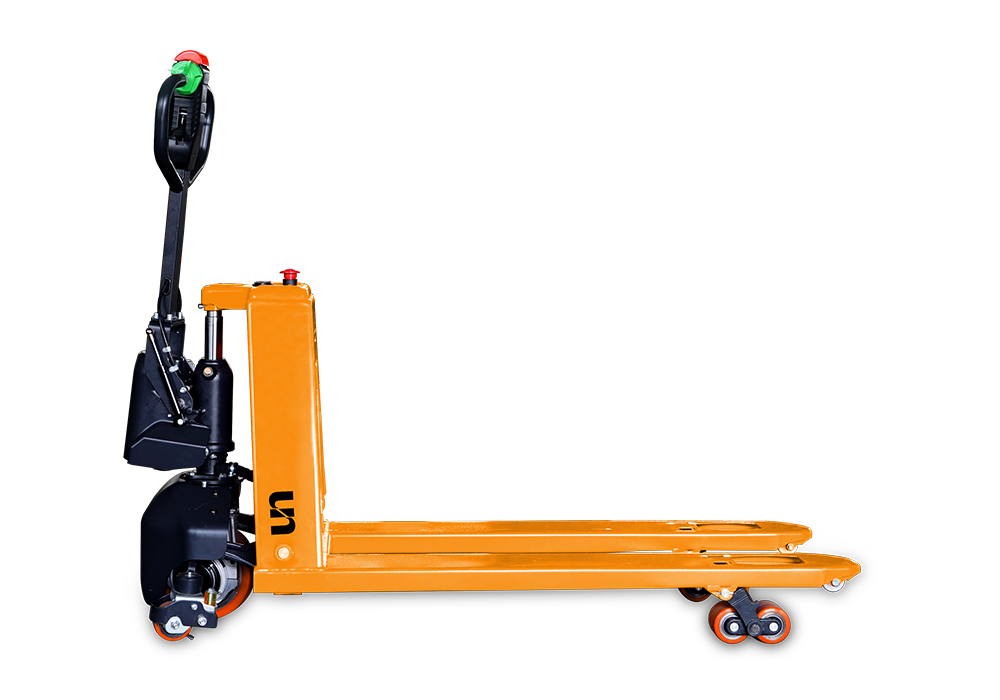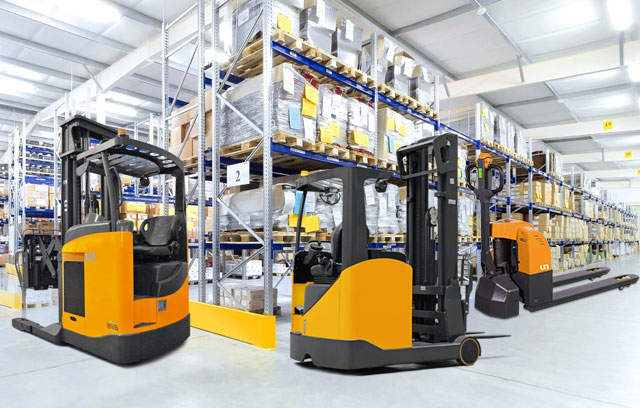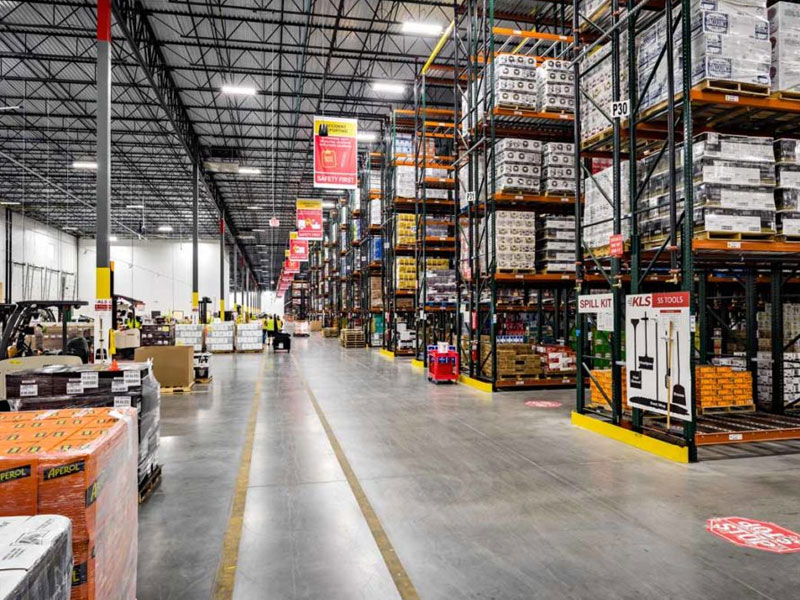Differences in structural design
There are obvious differences in structural design between manual pallet trucks and electric pallet trucks. Manual pallet trucks mainly rely on operators to manually pump oil through hydraulic pump rods to achieve the lifting and lowering of forks. The overall structure is relatively simple, consisting of fork frames, hydraulic systems, wheels and operating handles, which are easy to repair and maintain. Electric pallet trucks are equipped with electric drive systems, including batteries, controllers, motors and electronic control handles, etc., which automate the lifting and lowering of forks and vehicle movement, and the structure is relatively complex. Electric pallet trucks usually also include charging ports and battery compartments, and the overall weight and volume are larger than manual pallet trucks.
Power source and operation method
Manual pallet trucks rely entirely on manual power for pushing and lifting operations. The operator lifts the forks through the pump rod and relies on manual control of the lifting height. When moving, the vehicle body needs to be pushed and pulled by manpower. Electric pallet trucks are equipped with a motor system that can achieve power drive. Users only need to operate the electric control handle to complete the lifting and lowering of forks and the movement of vehicles, reducing manpower consumption. The operation of electric pallet trucks is relatively simple, suitable for long-term or high-intensity handling operations, and can effectively improve work efficiency.
Load capacity and scope of application
Due to the different power systems, manual pallet trucks and electric pallet trucks differ in load capacity and scope of application. Manual pallet trucks are suitable for carrying light to medium-weight goods, with a general load capacity of 1 ton to 3 tons, suitable for short-distance transportation within the warehouse or loading goods on shelves. Electric pallet trucks usually have a larger load capacity, and some models can carry more than 3 tons of goods, and are suitable for medium and long-distance transportation and high-frequency operations. Electric pallet trucks are often used in large logistics centers, production workshops and other scenes that require efficient transportation because of their labor-saving operation.

Maintenance requirements
Manual pallet trucks have a simple structure and are relatively easy to maintain, mainly focusing on oil replacement of hydraulic systems, lubrication and replacement of wheels and bearings, and inspection of hydraulic pumps. Electric pallet trucks are more complicated to maintain because they involve batteries, motors and electronic control systems. Battery charging and maintenance are key, and overcharging and deep discharge need to be prevented. The motor and controller need to regularly check the electronic connection and operating status. The overall maintenance cost and technical requirements are relatively high, and regular maintenance by professionals is required.
Differences in size and weight
The design of manual pallet trucks focuses on lightness and flexibility. The weight of the vehicle is relatively light, which is convenient for operators to use in small spaces. Electric pallet trucks are equipped with batteries and motors, so they are larger and heavier overall. They require more spacious space when operating and have a relatively large turning radius. The difference in size and weight makes the applicability of the two different in different working environments. Manual pallet trucks are more suitable for environments with limited space and small cargo volume, while electric pallet trucks are suitable for places with high requirements for handling efficiency and load capacity.
Operator skill requirements
The operation of manual pallet trucks is relatively simple, and basic training can master the use method, which is suitable for most warehouse workers. Electric pallet trucks are relatively complex to operate because they involve electric control systems. Operators need to have certain electrical and mechanical knowledge and master the skills of using electric control handles. Some high-end electric pallet trucks are also equipped with intelligent control systems, which require users to be familiar with the intelligent functions and fault diagnosis of the equipment.
Energy consumption and environmental protection
Manual pallet trucks do not rely on electricity, are completely driven by humans, have no energy consumption and emissions, and are suitable for environments with high requirements for environmental protection. Although electric pallet trucks are powered by batteries and have no direct exhaust emissions, the battery charging process involves power consumption, and the production and scrapping of batteries also bring certain environmental burdens. In recent years, with the advancement of battery technology, the environmental performance of electric pallet trucks has gradually improved, but the overall energy consumption is still higher than that of manual pallet trucks.
Cost investment and economy
Manual pallet trucks have low procurement costs, simple structures, long service life, and relatively low maintenance costs. They are suitable for occasions with limited budgets or small handling tasks. Electric pallet trucks have a large initial investment, including the cost of batteries and electronic control systems, but because of their high work efficiency, they are suitable for high-intensity operations and can effectively save labor costs. In the long run, the overall operating cost of electric pallet trucks is greatly affected by battery life and maintenance costs. Reasonable use planning and maintenance are important factors in reducing costs.
|
Comparison Aspect |
Manual Pallet Truck |
Electric Pallet Truck |
|
Structure |
Simple, mainly manual hydraulic system |
Complex, includes electric motor and battery |
|
Power Source |
Human power |
Electric motor powered by battery |
|
Operation |
Manual pumping and pushing |
Motorized lifting and driving |
|
Load Capacity |
Generally 1-3 tons |
Often above 3 tons |
|
Maintenance |
Mainly hydraulic and mechanical parts |
Includes battery, motor, and electronic systems maintenance |
|
Size and Weight |
Lighter and more compact |
Heavier and larger due to battery and motor |
|
Skill Requirement |
Basic training |
Requires knowledge of electric controls |
|
Energy Consumption |
No energy consumption (manual operation) |
Battery-powered, requires charging |
|
Initial and Operating Cost |
Lower purchase and maintenance cost |
Higher purchase cost, variable operating cost |











 中文简体
中文简体 عربى
عربى Español
Español














